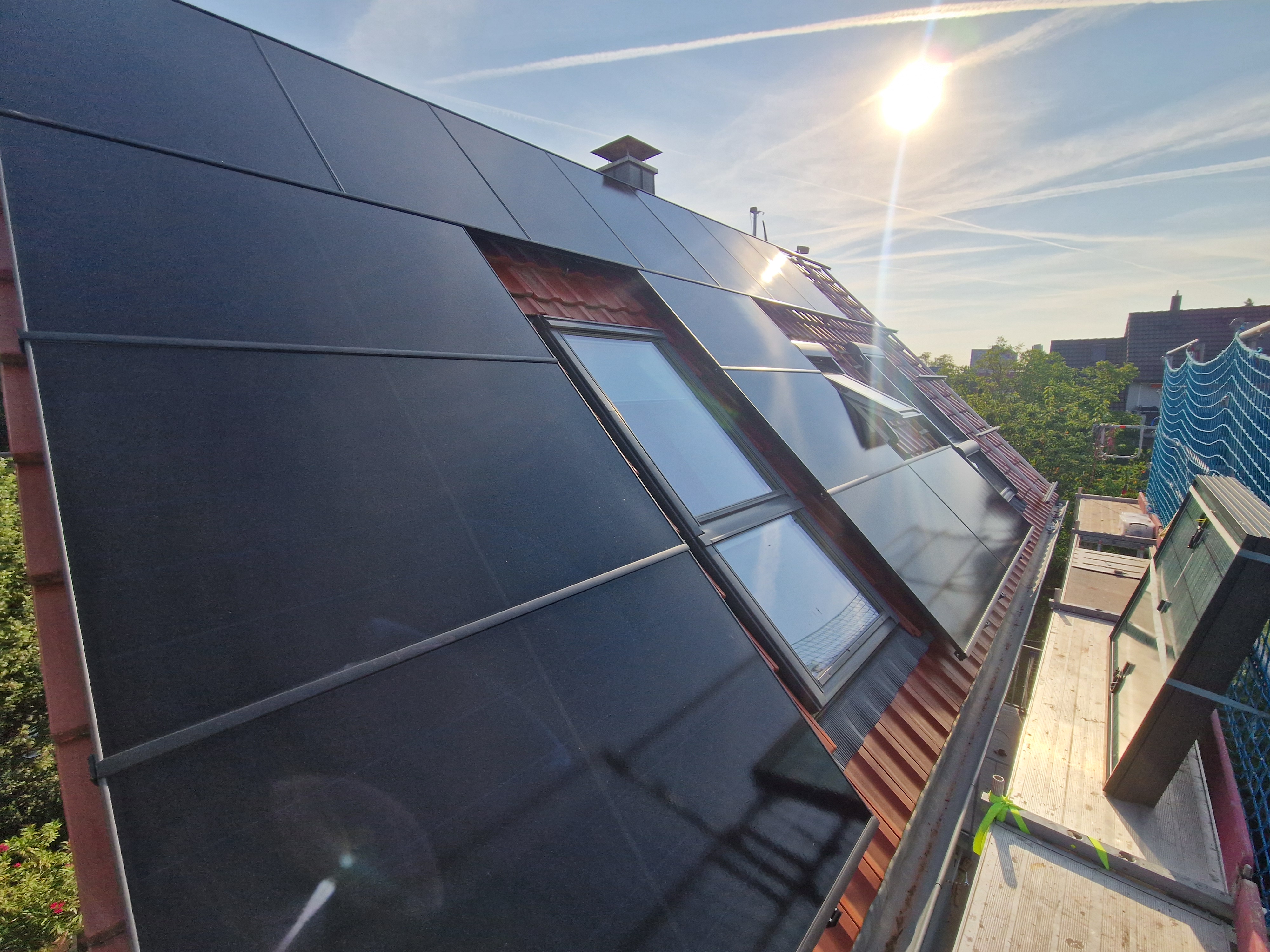Hail Damage to Solar Systems – Detecting Invisible Damage
After a hailstorm, microcracks in PV modules may remain unnoticed – an electroluminescence inspection makes them visible.
We advise, plan and install your individual photovoltaic system in the greater Stuttgart area. We carry out every step ourselves with our own specialists. Let us convince you during a personal consultation.

Step 1: First conversation
The first appointment takes place at your premises with one of our experienced project managers. We will measure your roof and talk to you about your requirements and general conditions.
Step 2: Offer
After the initial consultation, we draw up an individual system plan with various configuration options and battery storage sizes and their cost range. We work with you to develop your desired system and prepare a detailed offer for you.
Step 3: Planning
After commissioning, we schedule the installation date with you and make all the necessary inquiries with the network operator. If necessary, we request external expert opinions, e.g. on statics.
Step 4: Installing
For the grid-compliant electrical installation of your PV system, we attach particular importance to proper and safe cable routing and good lightning protection.
Step 5: Commissioning
For commissioning with all measurement protocols and a folder with data sheets, planning documents and official documents, we will thoroughly instruct you in the function of your PV system.
Ready!
Even after commissioning, we are available to answer any questions or queries you may have.

PV Installation FAQ
Are you planning to install your own solar system and want to know what matters during planning and installation? The following questions about photovoltaic systems are frequently asked by our customers:
Yes. Upon request, we install battery storage systems and wallboxes. To optimize self-consumption, we ensure communication between the inverter, battery, wallbox, and heat pump. This makes your solar system the central component of a sustainable energy concept.
The actual installation phase — including the substructure, modules, and inverter — usually takes between two and four days, depending on the roof type and system size.
Please note: The grid connection request must be submitted to the utility company approximately one full month before commissioning.
We are always available for our customers, even without a formal maintenance contract. Thanks to the notification features of modern inverters, we are automatically informed of any faults and can often perform remote diagnostics quickly. This ensures your solar system remains efficient over the long term.
Your roof should have sufficient load-bearing capacity and be in good structural condition. Ideally, it should face south or east/west, or be a flat roof. Any existing shading (e.g., from trees or chimneys) will be considered during the planning process.
Installation should only be carried out by qualified professionals. The electrical connection in particular must be completed by a certified electrician. Self-installation is not recommended for safety and warranty reasons.
In most cases, registration with the local grid utility company and entry into the "Marktstammdatenregister" is sufficient. A building permit is typically not required for residential homes — except for listed buildings or special structures.
We handle the grid connection request and assist you with all required documentation.
In Stuttgart, you can benefit from the city's Solaroffensive, which provides financial support for PV systems (up to €600/kWp), battery storage (up to €300/kWh), and charging stations (up to €1,000).
We are happy to inform you about the current funding conditions and assist with the application process.
In Baden-Württemberg, a PV Obligation applies for major roof renovations. Such renovations include projects where the roof covering or waterproofing is completely renewed. The prerequisite is a suitable solar surface for PV use. We recommend reading the Practical Guide to the PV Obligation for detailed information.
Please contact us if you are interested.
We will be happy to advise you!
Our blog contains various entries on the subject of photovoltaics. Take a look and find out more.
After a hailstorm, microcracks in PV modules may remain unnoticed – an electroluminescence inspection makes them visible.
A guideline to prepare the site for a daylight EL inspection, ensuring an efficient workflow and having the site organised afterwards in the interests of the site owner.
Solarzentrum Stuttgart inspects modules after delivery at four 50 MWp PV sides in Spain.
The Solar Center ensures sustainable energy supply through the installation of a PV system in Stuttgart-East.
The Solarzentrum Stuttgart inspects a 1 MWp rooftop system in northern Germany.
Solarzentrum Stuttgart develops and tests the new fully automated daylight electroluminescence robot for inspecting ground-mounted systems.